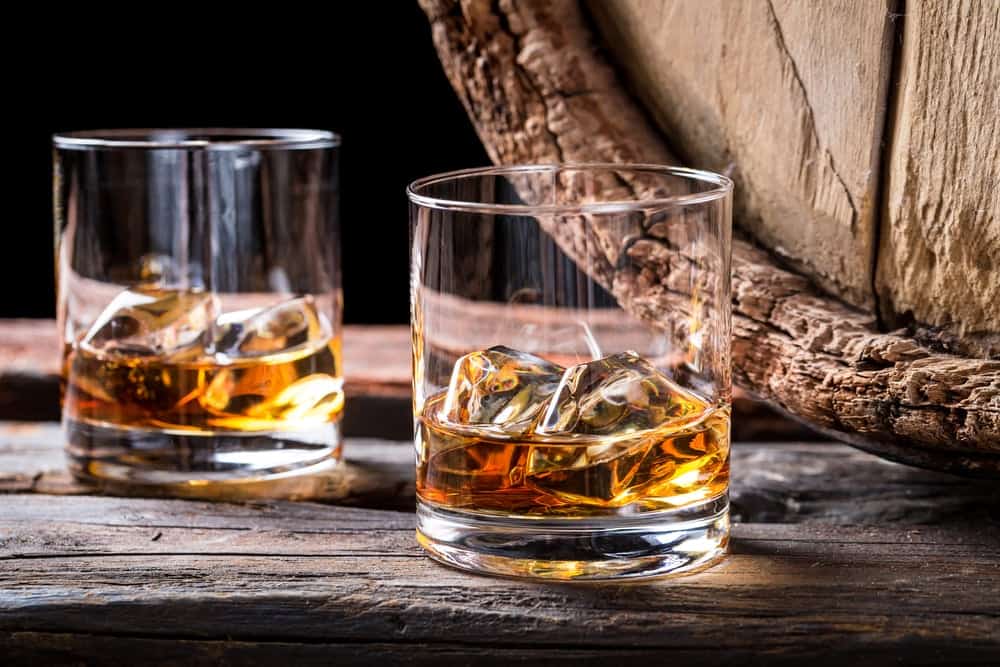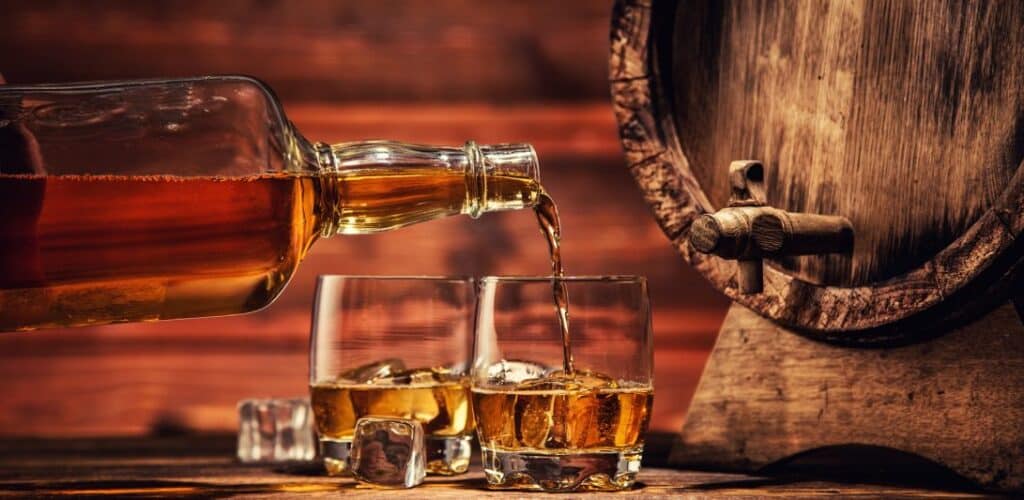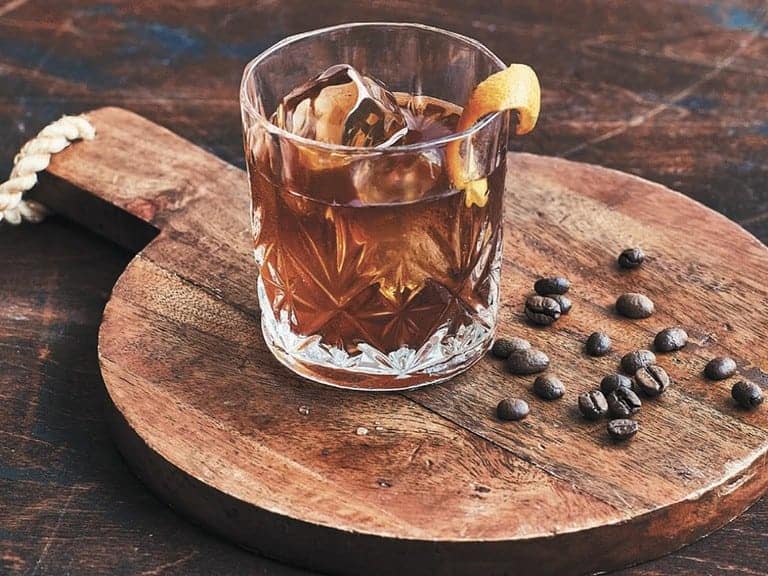Standard Pour of Bourbon: Your Guide to Perfect Sips
Diving straight into the world of bourbon without any fluff: getting that pour just right is more art than science. Whether you’re a seasoned sipper or a curious newcomer, there’s a sweet spot that elevates your drink from good to “can I have another?” This isn’t just about measuring; it’s about unlocking a world of flavor in every glass. Let’s journey together through the ins and outs of the Standard Pour of Bourbon, and trust me, by the end, you’ll be reaching for your favorite bottle, ready to pour like a pro. Let’s turn this knowledge into your next great bourbon experience.
What is Bourbon?

Bourbon is a distinct type of American whiskey, celebrated for its rich and smooth flavor profile that results from a meticulous production process. To be classified as bourbon, the spirit must be made from a grain mash that is at least 51% corn, aged in new, charred oak barrels, and contain no added flavoring or coloring.
This aging process imparts a characteristic sweetness and robustness to the spirit, setting it apart from other whiskeys. Bourbon is deeply rooted in American history, with Kentucky often hailed as its birthplace, though it can be produced anywhere in the U.S. This spirit embodies a legacy of craftsmanship and tradition, offering a complex, nuanced drinking experience.
How to Drink Bourbon Whiskey
Drinking bourbon whiskey is like listening to your favorite playlist; there’s a rhythm to it that can elevate the entire experience from ordinary to extraordinary. Whether you’re a seasoned aficionado or just dipping your toes into the amber waters of bourbon, here’s how to do it with style, understanding, and a bit of flair.
Select the Correct Glass First
Selecting the proper vessel is the first step in the journey. The large bowl and tapering lip of a Glencairn glass make it ideal for nosing and letting you completely enjoy the aroma of the bourbon. A rocks glass or even a snifter works excellent if you don’t have one. Everything that happens next is set in motion by the appropriate glass.
Is It Better to Water or Not?
This is where individual taste becomes very important. Cool, beside the river, or out on the cliffs? You can taste the bourbon at its purest when you sip it plain, or without ice. Flavors can be opened up and made more prominent with a spray of water. Ice cools and thins, making a drink easier to take. Play around to discover your sweet spot.
Enjoy the Fragrance
Take a moment to nose your bourbon before taking a sip. Give it a gentle swirl in the glass, then open your mouth a little to sniff it. You may detect traces of caramel, oak, vanilla, or perhaps some floral aromas. The taste experience is enhanced by this preface.


The Initial Drink
Letting the bourbon coat your tongue, take a tiny sip. As you do, take a deep breath through your nose. This lets the flavors develop and blend together, allowing you to experience the whole range of sensations that the bourbon has to offer. Savoring is the key, so don’t rush.
Have Fun in a Responsible Way
The most crucial aspect of bourbon enjoyment is moderation. It’s important to create lasting memories in addition to enjoying the flavors. Bourbon is a beverage best savored slowly, so you can appreciate the artistry in each bottle.

Learning the Bourbon Basics: Your Quick Guide
Jumping into the bourbon scene can feel like learning a whole new language. But fear not! Here’s your quick guide to getting acquainted with this beloved amber spirit. Bourbon, in its essence, is a type of American whiskey with a rich tapestry of flavors ranging from sweet to smoky, all thanks to its unique production process.

- The Core Ingredient: Bourbon must be made from a mash that is at least 51% corn. This gives it a distinctive sweetness compared to other types of whiskey.
- The Aging Process: After distillation, bourbon takes a nap in new, charred oak barrels. This isn’t just for show; it’s what gives bourbon its caramel colors and vanilla, oak, and toasty flavors. There’s a rule that if it’s not aged in new charred oak barrels, it simply isn’t bourbon.
- Proof Points: When bottled, bourbon must be at least 80 proof (which means 40% alcohol by volume). This ensures that every sip packs a punch while still allowing the intricate flavors to shine through.
- No Additives Allowed: True bourbon comes straight from the barrel to the bottle, with no added colors or flavors. This purity law helps maintain the integrity and taste of the bourbon, ensuring every bottle is as authentic as the last.
- Geography Matters: While bourbon can technically be made anywhere in the USA, Kentucky is considered its heartland, thanks to its limestone-rich water and favorable aging conditions. However, don’t be afraid to try bourbons from other states; they bring their own unique flavors to the table.
Understanding these basics puts you on the first step to becoming a bourbon aficionado. Whether you’re sipping it neat, with a splash of water, or in a classic cocktail, bourbon offers a world of flavors waiting to be explored. So, grab a glass, and let’s dive into the rich, warming world of bourbon. Cheers to learning and savoring!
Tasting Bourbon: A Journey for the Senses
Tasting bourbon is like going on an adventure where each sip tells a story of craftsmanship, tradition, and the nuances of nature. It’s not just about drinking; it’s about experiencing. Here’s how to make the most of your bourbon tasting journey, engaging all your senses to uncover the full spectrum of flavors and aromas.
- Look: Begin with the eyes. Observe the bourbon’s color in the glass – from golden amber to deep mahogany. The hue can give clues about its age and the types of barrels used for aging. A richer color often suggests a longer aging process and potentially more depth of flavor.
- Swirl: Give your bourbon a gentle swirl in the glass. This isn’t just for show; it helps to open up the bourbon, releasing its complex aromas. Watch the liquid cling to the side, forming legs that slowly trickle down. Thicker legs can indicate a fuller body and higher alcohol content.

- Smell: Bring the glass to your nose and take a gentle inhale with your mouth slightly open. This allows you to catch both the bold and subtle notes. You might detect vanilla, caramel, oak, and maybe even hints of fruit or spices. Each bourbon has its unique aroma profile, shaped by its ingredients, distillation, and aging.
- Sip: Now, the moment you’ve been waiting for. Take a small sip, letting it coat your tongue. Try to identify the flavors you sensed in the aroma. Is it sweet, spicy, smoky? How about the texture? Is it smooth, rich, or perhaps a bit fiery from the alcohol?
- Savor: After swallowing, pay attention to the finish – the taste that lingers in your mouth. A long, complex finish is often the sign of a high-quality bourbon. It’s where you might discover flavors you didn’t notice at first.
- Reflect: Take your time between sips. Bourbon tasting is not a race; it’s an experience to be savored. Reflect on the flavors and sensations.
What Is a Standard Liquor Pour?

A standard liquor pour is like the universally agreed-upon handshake between bartenders and drinkers—it’s the basic unit of booze we all kinda expect when we order a drink at a bar or when measuring out cocktails at home. This standard pour is usually about 1.5 ounces (44 milliliters).
Think of it as the perfect middle ground. It’s enough to get all the flavors and warmth you’re looking for without tipping the scales into “Whoa, that’s a bit much” territory. Whether you’re crafting a meticulous cocktail or just pouring a simple whiskey on the rocks, this amount is your golden ticket to flavor town without overdoing it.
Why 1.5 ounces, you ask? It’s basically a balancing act. This amount allows the drink to be both enjoyable and economical for bars and home bartenders alike. Plus, it keeps things consistent, so when you’re comparing notes on drinks with friends, you know you’re all speaking the same language.
What is a Standard Pour of Bourbon?

A standard serving of bourbon is typically 1.5 ounces (44 milliliters). This is the sweet spot for enjoying the complex flavors of bourbon without overindulging. Whether you’re savoring it neat, on the rocks, or mixed into a cocktail, this serving size allows you to fully appreciate the depth and nuances of the spirit. It’s the perfect measure for a balanced tasting experience, ensuring that you can enjoy the rich tapestry of flavors bourbon has to offer.
How many ml is a pour of bourbon?
A pour of bourbon typically measures out to about 44 milliliters (ml), which translates to roughly 1.5 ounces in the language of barrooms and bourbon glasses. This standard serving size is the sweet spot for enjoying bourbon’s complex flavors without overdoing it. It’s like the perfect bite of your favorite dessert – enough to satisfy but leaving you wanting just a bit more.
This 44 ml measure is widely adopted in bars and homes as a way to ensure each drink delivers the intended experience crafted by distillers and mixologists.
Whether you’re savoring your bourbon neat, on the rocks, or in a classic cocktail like an Old Fashioned, this amount allows you to fully appreciate the spirit’s depth and character. It’s the ideal measure to kick back with, letting the day melt away as you immerse yourself in the nuanced world of bourbon.

Mixing Bourbon: The Art of Crafting Perfect Cocktails
Mixing bourbon into cocktails is like playing jazz; it’s all about improvisation within a structure, bringing together different elements to create something harmonious and delightful. Bourbon, with its rich flavor profile, plays well in a wide array of cocktails, from the classic to the contemporary. Here’s how to start mixing like a pro:

- Start with the Classics: Begin your mixing adventure with classic bourbon cocktails like the Old Fashioned, Manhattan, or a Mint Julep. These time-tested recipes showcase bourbon’s versatility and are the perfect foundation for understanding how bourbon interacts with other ingredients.
- Balance is Key: The secret to a great bourbon cocktail lies in the balance of flavors. Bourbon’s natural sweetness pairs well with a bit of acidity from citrus, the bitterness of certain liqueurs or bitters, and the sweetness from syrups or liqueurs. Experiment with these elements to find the perfect harmony for your palate.
- Experiment with Modifiers: Don’t be afraid to play around with different liqueurs, bitters, and fresh ingredients. Ingredients like vermouth, Campari, or even a splash of ginger beer can transform a simple bourbon drink into something complex and intriguing.
- Consider the Proof: The proof of your bourbon can significantly affect your cocktail. Higher-proof bourbons bring more heat and flavor, standing up well against stronger mixers and flavors, while lower-proof bourbons might be better suited for more subtle creations.
- Garnish Thoughtfully: The right garnish does more than just look pretty; it can enhance the drink’s flavor. A simple orange peel in an Old Fashioned adds a fragrant citrus note, while fresh mint in a Mint Julep brightens the drink beautifully.
Mixing Bourbon in a different kinds of drinks
Mixing bourbon into a variety of drinks is an art form that celebrates the versatility of this beloved American spirit. Bourbon’s rich, full-bodied flavor makes it a fantastic base for a wide range of cocktails, appealing to diverse palates and occasions. Here’s a glimpse into the world of bourbon mixology:



- Old Fashioned: A timeless classic that highlights bourbon’s depth with a touch of sugar, a few dashes of bitters, and an orange twist to enhance its character.
- Mint Julep: A refreshing choice, especially during the warmer months, mixing bourbon with fresh mint, sugar, and crushed ice, perfect for sipping on a sunny afternoon.
- Whiskey Sour: This cocktail balances bourbon’s sweetness with the tartness of lemon juice, smoothed out with a hint of simple syrup and often an egg white for a silky texture.
- Manhattan: A sophisticated blend of bourbon, sweet vermouth, and bitters, garnished with a cherry, offering a perfect balance between sweet and bitter.
- Boulevardier: A bourbon-based cousin to the Negroni, swapping out gin for bourbon, and mixed with Campari and sweet vermouth for a bittersweet and complex drink.


Mixing bourbon into cocktails is an art that rewards creativity and experimentation. Each cocktail is a canvas, with bourbon as your primary color. Whether you’re sticking to the classics or inventing something entirely new, the key is to have fun and enjoy the process.
Conclusion
Wrapping it all up, the essence of bourbon—its rich history, unique production process, and versatile character—can be fully appreciated with just a 44 milliliter (1.5 ounce) pour. This standard serving size is the golden key to unlocking the myriad flavors and aromas that bourbon has to offer, from the deep caramel and vanilla notes aged in charred new oak barrels, to the subtle nuances that vary from bottle to bottle.
Whether you’re exploring bourbon for the first time or refining your palate, remembering this standard pour helps maintain balance both in taste and consumption. Bourbon is more than just a drink; it’s an experience, a craft, a slice of American heritage meant to be savored responsibly and appreciatively. So, pour yourself that 44 ml of bourbon, let its story unfold in your glass, and toast to the tradition and craftsmanship that make every sip worth savoring.
Jl.Surjan
Disclosure: Our blog contains affiliate links to products. We may receive a commission for purchases made through these links. However, this does not impact our reviews and comparisons. We try our best to keep things fair and balanced, in order to help you make the best choice for you.






